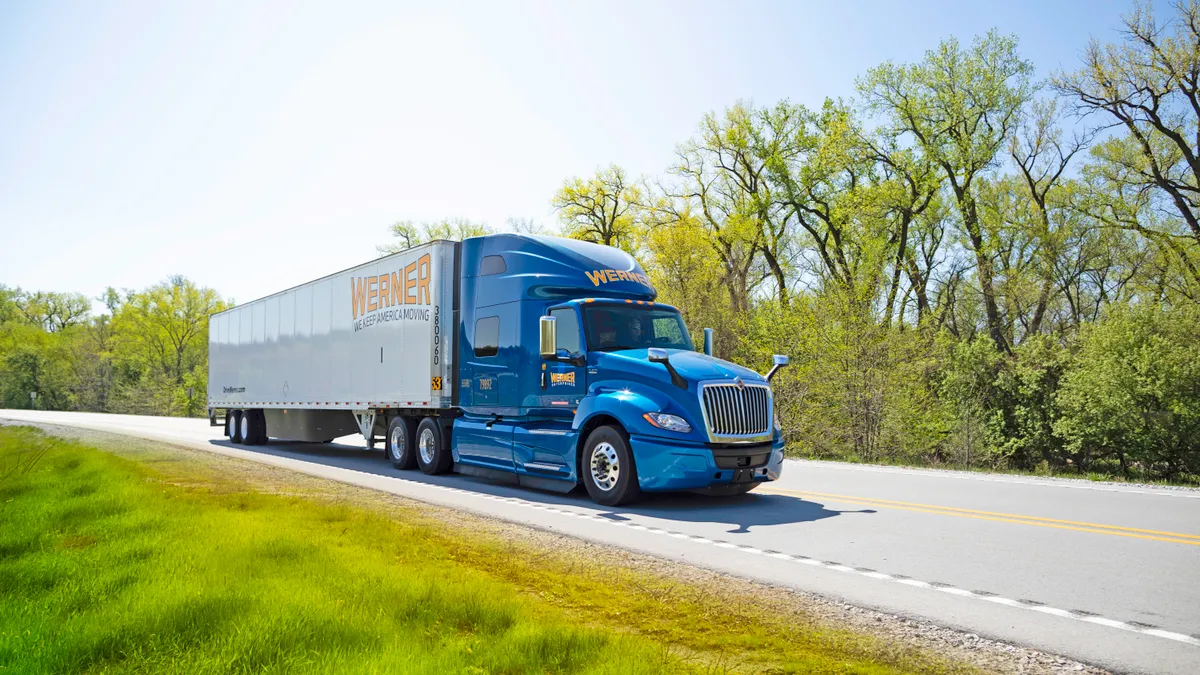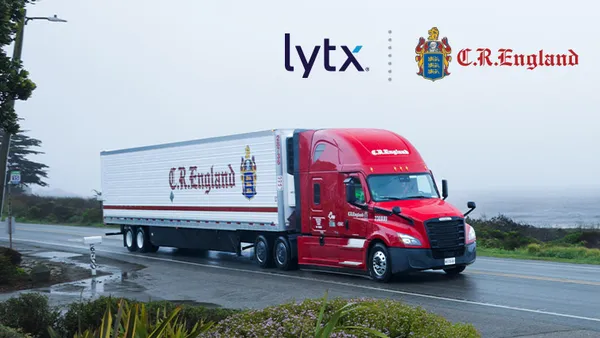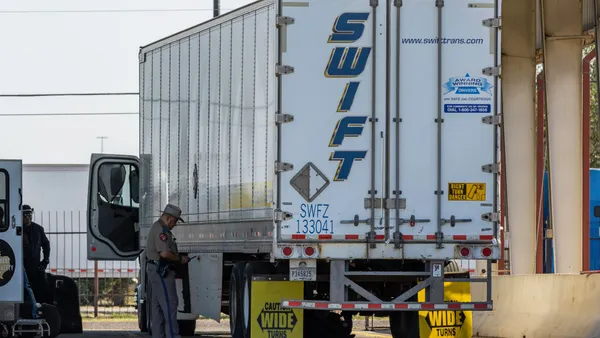Werner Enterprises plans to keep many aspects of Baylor Trucking's operations in place — including its workforce and brand — as the two companies combine.
In an interview Tuesday, two Werner executives shared new details about the acquisition, including how they expect the companies' cultures to mesh together, how the deal unfolded and the qualities that attracted the carrier to buy the business.
“Baylor is a fantastic organization that’s producing awesome results on their own,” Craig Callahan, Werner's chief commercial officer, told Transport Dive.
Equipment, buying power factor into the deal
Werner chooses its acquisition targets based on a variety of factors, which Callahan listed as North American companies that are "thriving and profitable," are clear cultural fits, and have the potential to add depth or breadth to Werner
All of those boxes were checked off in Baylor's case. When Werner announced the deal, it noted the Indiana-based carrier recorded $81.5 million in revenue for the 12 months ending Aug. 31. Its operations also included a significant amount of equipment: 234 drivers, 200 trucks and 980 trailers.
The deal comes as equipment has arisen as one of the top factors in trucking M&A in recent years. Amid supply chain woes, OEM production constraints have led to aging fleets and limitations on carriers’ ability to replace equipment.
“This is an opportunity for Baylor Trucking to become part of the Werner family ... with our buying power and our access to equipment,” Callahan said. “And that’s really the name of the game right now because it’s such an equipment-constrained environment.”
A clear cultural fit
The deal developed following conversations with Baylor President Cari Baylor at meetings with the American Trucking Associations, Callahan said.
Chad Dittberner, senior vice president of van/expedited for Werner, noted the companies’ cultures aligned “very, very well together,” in areas such as hiring standards and driver expectations.
“The fact that both companies start from a baseline of safety and service at the forefront, and that’s how we start when we look at funding labor,” Callahan said, “I think sets us up for this to be a really good marriage.”













